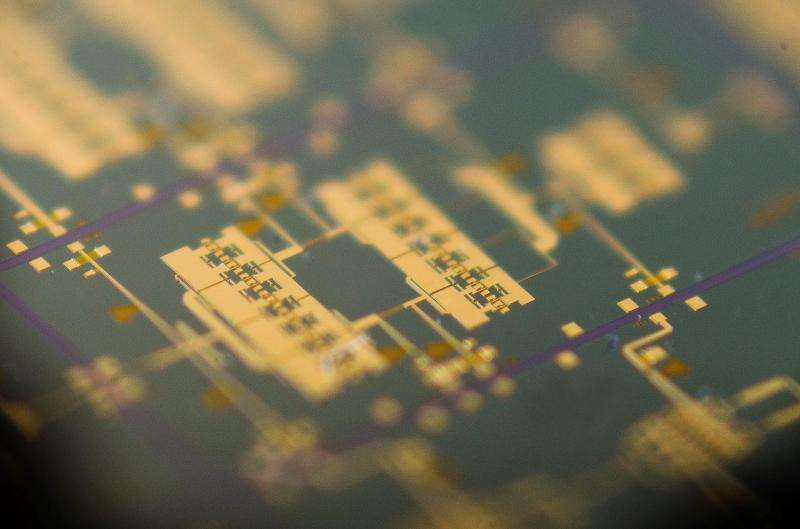Image: Arralis integrated circuit

A close-up glimpse at part of a microchip designed to provide high-frequency radar for future space missions, or else boost the speed of satellite communications.
This integrated circuit – produced for ESA by Ireland's Arralis company – is the centrepiece of a powerful 94 GHz radar system, offering nearly 10 times sharper resolution than the landing radar used by the Apollo missions to the Moon.
"It might make planetary landings much safer in future," explains Barry Lunn, CEO of Arralis. "This mm-wave radar could identify small but hazardous rocks across a candidate landing zone, or else be used by a spacecraft in flight to identify and avoid adjacent debris."
The Limerick-based company already markets high-frequency chips, modules and antennas to terrestrial markets, for uses including helicopter landing radar.
The high-frequency chip developed through the project – supported through ESA's long-running General Support Technology Programme, looking to prepare promising products for the market – also has the potential to turbocharge terrestrial wifi speeds, along with space communications.
"The project team exhibited a very rapid learning curve, helping to bring these integrated circuits to a point where they could be taken up by future space missions," adds Petri Piironen, managing the project for ESA.
"We have already begun a follow-project with Arralis, looking at the next level of product development: integrating these chips into radar modules."
Provided by European Space Agency




















